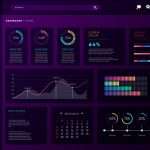
Designing for neurodiversity in enterprise apps means deliberately reducing cognitive load through clearer layout, calmer motion, and humane copy so more people can complete complex tasks with confidence and speed. Below is a practical, systems-level guide for product teams shipping B2B web and mobile software, grounded in cognitive accessibility guidance and enterprise UX realities.
Hire a Developer
Why this matters
Enterprise tools often stack dense data, time pressure, and nested workflows—conditions that disproportionately burden neurodivergent users, including those with ADHD, autism, and dyslexia. Reducing cognitive load improves task success, error rates, and adoption for everyone, not just people with diagnosed differences, which directly impacts activation and retention in B2B environments.
Cognitive load 101
-
Intrinsic load: tame complexity at the workflow level by sequencing tasks into short, goal‑named steps with visible progress (e.g., Step 2/4: Assign roles), and by isolating high‑risk actions behind explicit review screens. This preserves power features while reducing working‑memory demands during critical moments.
-
Extraneous load: eliminate needless switching costs via stable navigation, plain labels, and predictable placements; remove decorative noise, merge duplicate entry points, and constrain per‑screen choice to what’s essential for the primary task.
-
Germane load: teach once and reuse patterns; provide inline examples, “learn by doing” hints, and consistent micro‑interactions so acquired schemas transfer across modules without relearning.
Layout principles
-
Hierarchy and spacing: use a generous typographic scale (e.g., 16–18 px base with 1.25–1.5 line‑height) and 8‑point spacing to visually group related controls; emphasize the primary action with weight and position, and demote secondary stats to reduce eye saccades.
-
Chunking and scannability: break forms into 4–8 field groups with titled sections; place summaries at the top of dense screens and offer “focus mode” to hide non‑critical panels during high‑stakes tasks.
-
Consistency and wayfinding: keep navigation, help, and primary actions in fixed regions across modules; mirror keyboard focus order to the visual order; provide persistent breadcrumbs and “return to last safe state.”
Motion guidelines
-
Default calm: remove auto‑playing carousels and ambient animations; throttle live updates in tables and charts. Offer pause/stop/hide controls where motion is necessary.
-
Purposeful transitions: use brief, predictable easing (e.g., 120–180 ms ease‑out) for state confirmation (success, error, selection) and focus movement only; avoid large‑scale parallax or zoom during core workflows.
-
Respect preferences: implement a global “reduce motion” setting and honor OS‑level prefers‑reduced‑motion; provide high‑contrast, non‑motion affordances (e.g., color and shape changes) for state changes.
Copy and content
-
Literal, action‑first language: write verb‑led CTAs (“Create invoice”) and avoid idioms or metaphors; pair icons with text so meaning never depends on symbolism alone.
-
Transparent forms: reveal requirements upfront (“Password: 12+ chars, 1 symbol”), show examples directly under fields, and map errors to fields with inline, plain‑language guidance and a single summary at the top.
-
Reduce reading and re‑entry: prefill known values, let users confirm rather than retype, and present next steps in 2–4 bullets at the top of complex pages to anchor expectation.
Enterprise‑specific patterns
-
Dashboards: provide a focus panel (primary KPI + “next best actions”) with toggles to reveal advanced analytics on demand; allow per‑role saved views with plain‑language names (“Finance—Month close”).
-
Risky admin flows: use wizards with review screens that summarize impact (“Will revoke access for 12 users”) and support undo windows to lower error anxiety.
-
Search/filters: show recently used filters and saved views contextually; keep filter scopes clear and mutually exclusive; surface “why results appear” to reduce trial‑and‑error thrashing.
Accessibility hooks to implement now
-
Input and focus: large, consistent focus indicators that aren’t hidden by sticky UI; hit targets ≥ 44×44 px; ensure visible labels (not only placeholders) and descriptive names for assistive tech.
-
Interaction alternatives: provide non‑drag options for reordering and resizing; avoid timed tasks where possible or offer easy extensions; never gate access behind puzzle CAPTCHAs—support passkeys/email links.
-
Motion and status: add pause/stop for moving content; communicate status changes with text and ARIA live regions in addition to color/motion.
Personalization and preferences
-
Density, contrast, and motion: per‑user switches for compact/comfortable density, high contrast, and motion reduction; persist by role and device.
-
Notification intensity: quiet mode to batch non‑critical toasts, suppress counters, and pause auto‑refresh; let users pick escalation channels only for critical alerts.
-
Mode selection: “Guided” vs “Expert” modes with a one‑line explanation and reversible switch; guided mode adds inline help, examples, and guardrails by default.
Testing with neuroinclusivity
-
Recruit for perspectives: include participants with ADHD, dyslexia, and autistic experiences; measure time‑to‑first‑meaningful‑action, error recovery time, and backtracks per step—not just completion.
-
Interruption resilience: simulate realistic interruptions; verify quick re‑orientation using breadcrumbs, return‑to‑focus, and visible step context; track how often users need to reread instructions.
-
Frustration signals: instrument analytics for thrashing (rapid filter toggles, back‑forth tabbing), rage‑clicks, and premature abandon; tie fixes to hypotheses about extraneous load sources.
Implementation checklist
-
Navigation: same order and placement across modules; clear “last safe state” action in risky areas; breadcrumbs everywhere.
-
Forms: chunk into steps; inline examples and upfront requirements; error summary + precise field mapping; remove redundant entry with confirm patterns.
-
Motion: no autoplay; short confirmation animations only; global/OS motion preferences respected; throttle live updates.
-
Copy: verb‑first CTAs; plain language; tooltips that explain consequences; summary bullets at the top of dense screens.
-
Preferences: density, contrast, motion, notification intensity, mode (guided/expert) stored per user and role.
Metrics to track
-
Task‑level: time‑to‑first‑meaningful‑action, steps per task, backtracks per step, error rate, error recovery time, and assistance‑free completion rate.
-
Attention and control: reduced‑motion adoption, target‑size mis‑taps, focus‑loss events, help‑within‑10s rate on dense forms, and toast dismissal rate.
-
Friction and trust: redundant‑entry count per session, authentication drop‑offs, undo usage rate after risky actions, and success on first attempt for “impact” operations.
Governance and scale
-
Tokenize clarity: codify spacing, focus rings, contrast thresholds, and motion durations in design tokens; lint for violations in CI and block merges for missing pause/stop on moving elements.
-
Component guidance: each component carries “cognitive load notes”—when to use, field limits, motion exceptions, microcopy templates, and accessibility dos/don’ts.
-
Definition of Done: add “neuroinclusive review” for flows affecting navigation, forms, motion, or notifications; require evidence of interruption‑recovery and reduced‑motion testing.
By treating cognitive accessibility as product performance work—reducing extraneous load, supporting stable orientation, and writing literal, anticipatory copy—enterprise teams can deliver calmer tools that increase confidence and throughput for diverse minds at scale.













